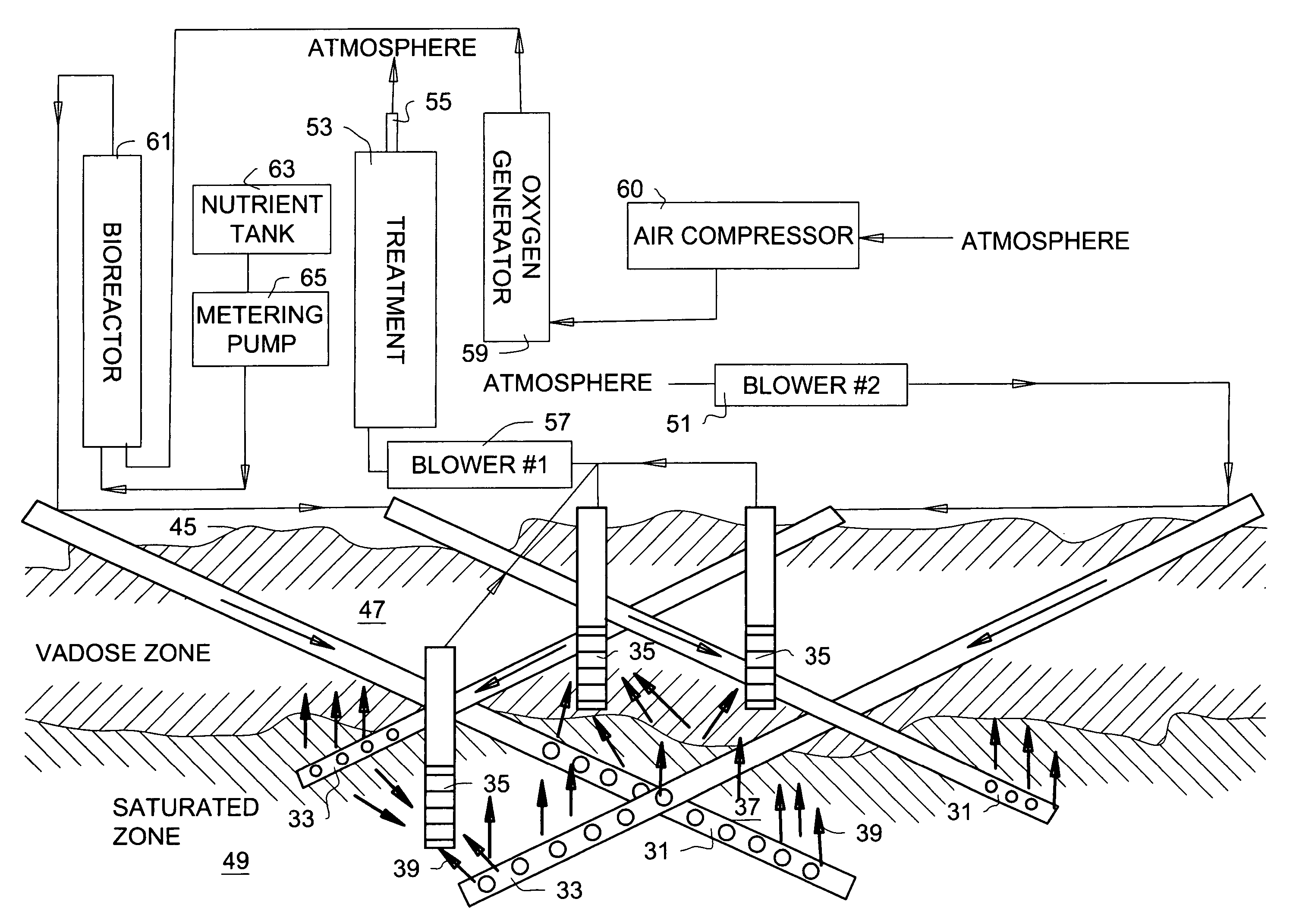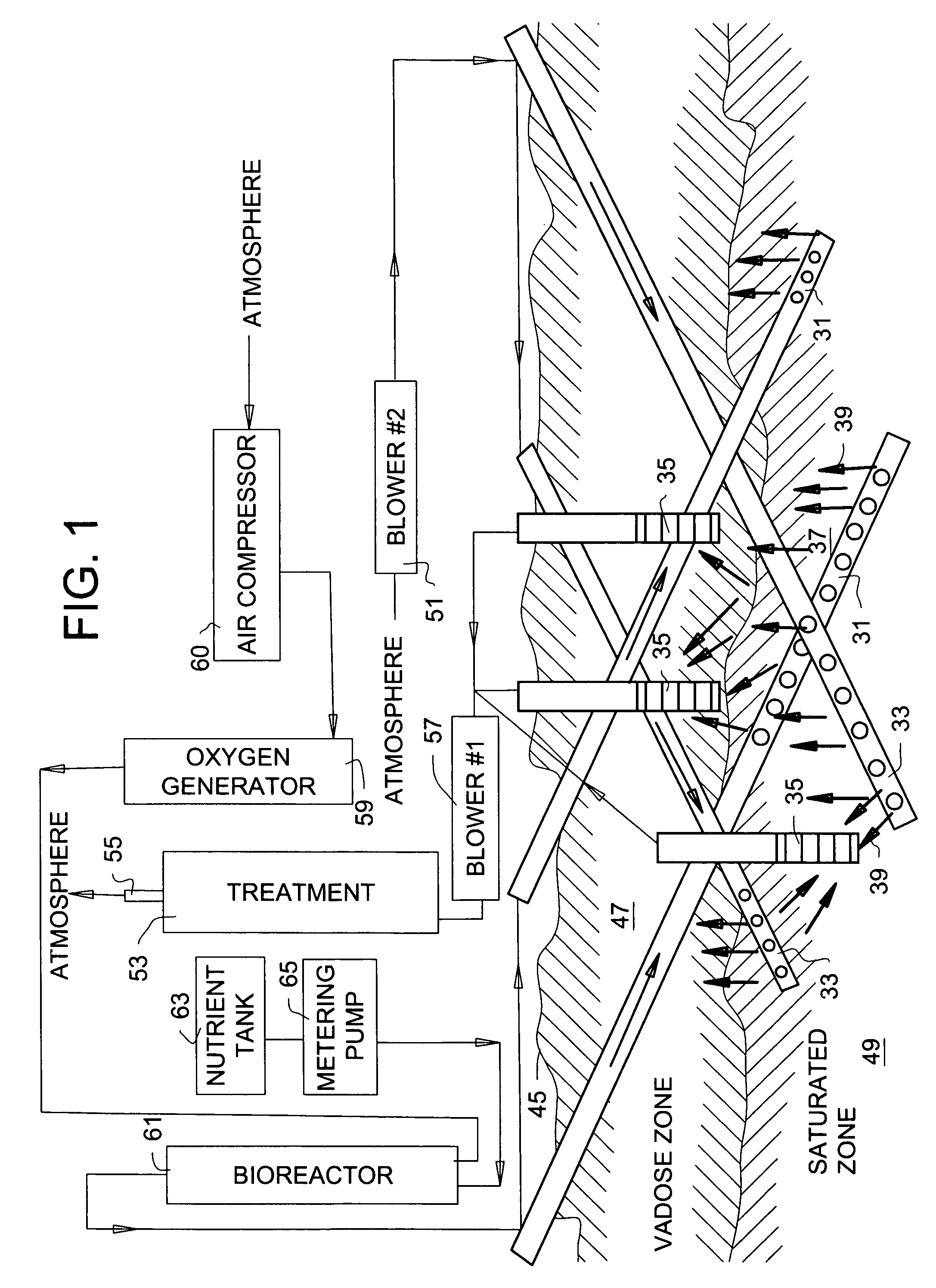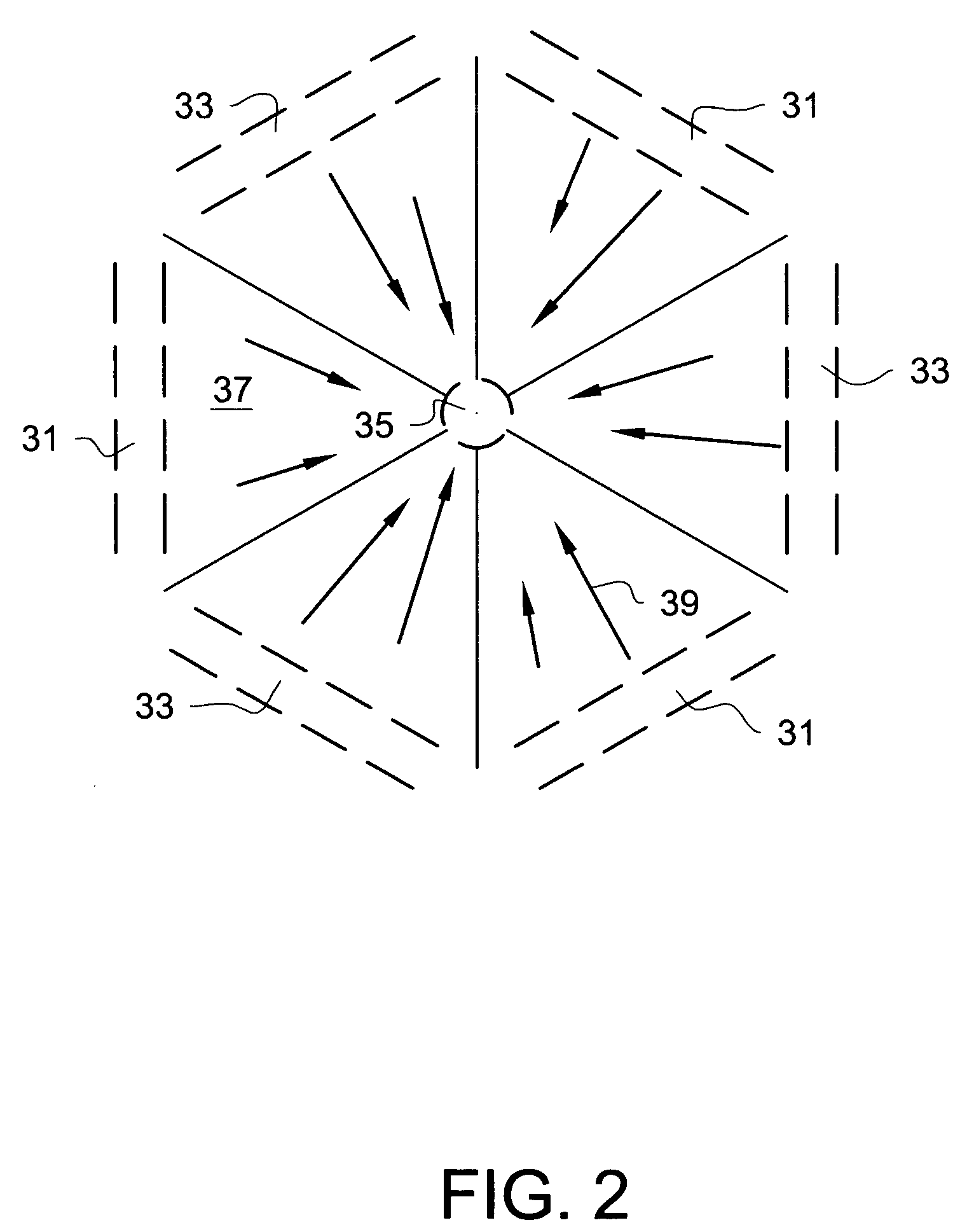System and method for decontamination of contaminated soil in the vadose zone and/or groundwater
a technology for contaminated soil and vadose zone, applied in sustainable biological treatment, biological water/sewage treatment, degassing, etc., can solve the problems of insufficient timely or rapid decontamination, high cost of current decontamination system, insufficient time-consuming and/or inadequate, etc., to increase the production of gas, accelerate volatilization rate, and increase the production of vapors
- Summary
- Abstract
- Description
- Claims
- Application Information
AI Technical Summary
Benefits of technology
Problems solved by technology
Method used
Image
Examples
Embodiment Construction
[0033] The present invention is a system and method for the accelerated decontamination of soil, or the vadose zone, and / or groundwater. The accelerated decontamination involves the remediation of contaminants via extraction of contaminated vapors, as well as induced vaporization with subsequent extraction of contaminated vapors, as well as accelerated biodegradation of the contaminants. Contaminants may originate, for example, from leaking underground petroleum storage tanks used for gasoline, and / or diesel, and / or oil, and / or waste oil, and / or solvent storage, and / or other materials, or from spills from railroad tanker cars or freight truck trailers or large ocean going shipping vessels. Contaminants may also originate from leaking electrical transformers or from many other possible sources. Such contaminants may include one or more organic compounds such as benzene, toluene, xylenes, naphthalene, methyl tert butyl ether (MTBE), pentachlorophenol (PCP), polychlorinated biphenyls (...
PUM
| Property | Measurement | Unit |
|---|---|---|
| temperature | aaaaa | aaaaa |
| temperature | aaaaa | aaaaa |
| pressure | aaaaa | aaaaa |
Abstract
Description
Claims
Application Information
 Login to View More
Login to View More - R&D
- Intellectual Property
- Life Sciences
- Materials
- Tech Scout
- Unparalleled Data Quality
- Higher Quality Content
- 60% Fewer Hallucinations
Browse by: Latest US Patents, China's latest patents, Technical Efficacy Thesaurus, Application Domain, Technology Topic, Popular Technical Reports.
© 2025 PatSnap. All rights reserved.Legal|Privacy policy|Modern Slavery Act Transparency Statement|Sitemap|About US| Contact US: help@patsnap.com



